Differences Between the Drive Reach and Drive X
weBoost Drive Reach vs. weBoost Drive X: Which to Get?
The weBoost line of vehicle cellular signal boosters have two multi-device, multi-carrier options: the Drive Reach and the Drive X. At first glance, these two boosters are rather similar, having the same basic function. However, a small amount of research reveals a large degree of difference between the two, not just in pricing. So, what are these differences, and which booster should you get?
-
Amplify 5G/4G/LTE data and voice for all cellular devices. This includes iPhones, Android, 5G phones, other smartphones, tablets and iPads, and cellular hotspots.
- Act as a 4G LTE network extender.
-
Work for all major North American carriers. This includes AT&T, Verizon, T-Mobile, US Cellular, Cricket, Boost Mobile, Tracfone, and more.
- Boosts all 5G/4G/LTE signal within the 700-2500 mHz bands.
- Have no monthly fees.
- Do not need WiFi or a landline connection.
- Are completely legal FCC-approved cellular extenders.
- Are compatible with all 5G ready mobile phones, and will work for the next decade and beyond.
- Come with a two-year warranty and an industry-leading 90-day money back guarantee.
We fix poor cell phone signal! Find the right signal booster for you:




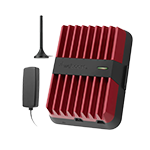
The most powerful and customizable vehicle signal booster
Buy Now for $499.99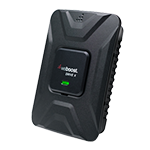
Price Differences
The first and clearest difference is in price. The weBoost Drive X goes for $100 less than the Drive Reach, so if that is your one and only consideration, it’s an easy call. Buy the weBoost Drive X, and you will receive better signal in your vehicle.
However, there are several reasons for the higher price of the Drive Reach that makes it a better option than the Drive X for many people. As you’ll see, the Drive Reach provides dramatically superior performance in nearly every way, making the extra hundred dollars worthwhile.
Power Differences
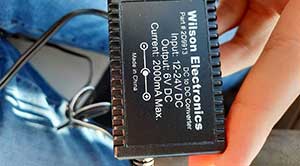
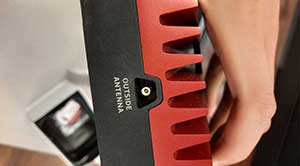
Power for any signal booster is broken down into three core components: maximum gain, uplink power, and downlink power. Power is where the true differences between the Drive X and Drive Reach lie. Let’s cover them one by one.
Maximum Gain
Gain is the increase in signal strength the booster gives to the signal obtained through the outside antenna, measured in dB (decibels).
Both the weBoost Drive X and Drive Reach have a maximum gain of +50 dB, the most allowed by the FCC for mobile signal boosters. The actual gain reaching your device is almost never this high due to a variety of factors, including:
- Uplink power is the amount of power the booster uses to connect to a cell tower. This measurement is expressed in dBm (decibel-milliwatts). The higher the number, the farther the booster’s range, and the farther you can travel from a cell tower while still receiving signal.
- Downlink power is the amount of power the booster uses to connect to cellular devices inside the vehicle. This is also expressed in dBm (decibel-milliwatts). The higher the number, the farther away from the inside antenna you can effectively use your phone inside the vehicle.
As dBm is a logarithmic measurement, a +3 dBm increase is effectively double the power. Keep that in mind when looking at these direct comparisons:
Uplink Band Frequency
| Uplink Band Frequency | weBoost Drive X | weBoost Drive Reach |
| 700 MHz (SMH Bands 12, 17) | 24.8 dBm | 28.3 dBm |
| 700 MHz (SMH Band 13) | 24.4 dBm | 29.1 dBm |
| 850 MHz (CLR Band 5) | 23.4 dBm | 29.5 dBm |
| 1700 MHz (AWS Band 4) | 21.3 dBm | 28.5 dBm |
| 1900 MHz (PCS Bands 2, 5) | 24.4 dBm | 28.3 dBm |
| Average | 23.7 dBm | 28.7 dBm |
Downlink Band Frequency
| Downlink Band Frequency | weBoost Drive X | weBoost Drive Reach |
| 700 MHz (SMH Bands 12, 17) | 2.87 dBm | 5.00 dBm |
| 700 MHz (SMH Band 13) | 1.90 dBm | 5.20 dBm |
| 850 MHz (CLR Band 5) | 2.80 dBm | 5.00 dBm |
| 1700 MHz (AWS Band 4) | 2.00 dBm | 5.00 dBm |
| 1900 MHz (PCS Bands 2, 5) | 1.92 dBm | 5.10 dBm |
| Average | 2.48 dBm | 5.10 dBm |
In short – the weBoost Drive Reach is nearly three times as powerful on uplink, and nearly twice as powerful on downlink. The real-world implications of this are huge - you will receive more reliable signal with the Drive Reach no matter what, and are able to reach cell towers in areas the Drive X simply can’t.
People who do a lot of driving in rural areas, or areas with frequent dead zones, will absolutely get more bang for their buck with the Drive Reach. But there are actually even more considerations, so let’s get to those.
Design Differences
A quick glance shows a major design difference between the Drive Reach and Drive X: their casing.
- weBoost Drive X casing: Black metal and plastic casing
- weBoost Drive Reach casing: Red metal casing with heat sink and mounting bracket
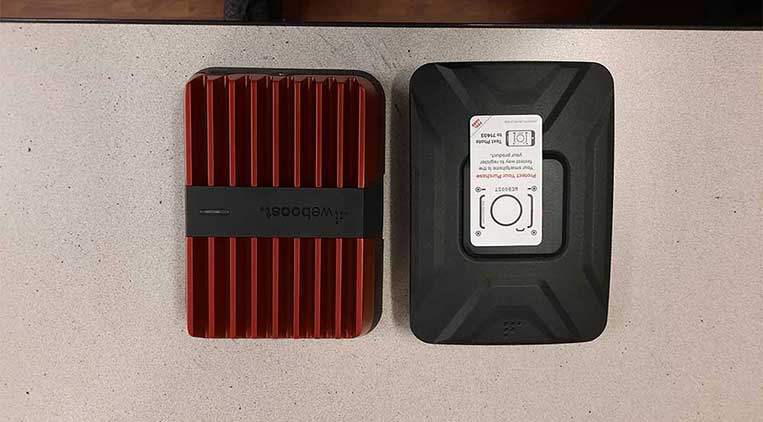
The weBoost Drive Reach’s increased power comes with increased heat generation, necessitating a heatsink be integrated into its design. This means it is less likely to overheat under any circumstance, including in hot weather. So, while the Drive X can occasionally overheat when being used in a hot car or when placed in a glovebox, the Drive Reach is far less likely to. Still, for best performance, the Drive Reach and Drive X should be placed in an area with decent airflow – underneath the driver’s seat should suffice for most cars.
The mounting bracket included with the Drive Reach also allows the booster to be placed in more out-of-the-way areas in larger vehicles such as RVs or campers.
Connector Differences
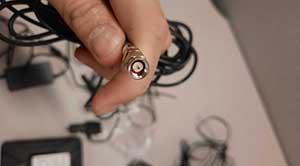
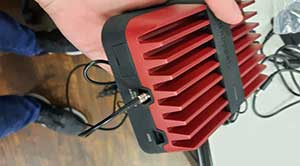
The weBoost Drive X uses SMA threaded connectors, whereas the weBoost Drive Reach uses SMB connectors.
This has a few major effects. First, only the weBoost Drive X is directly compatible with the optional 12" Antenna, which provides higher gain. The Drive Reach requires a SMA-to-SMB connector, which slightly lowers the antenna’s overall effectiveness.
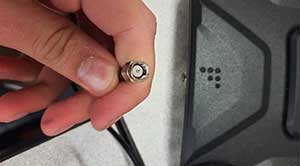
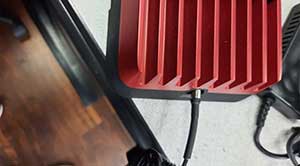
Second, the Drive X’s SMA connectors have a male connection on the coaxial cable, which twists into the female SMA connection on the signal booster. This makes the connection easy to remove should you wish to make use of the booster in several vehicles. If you plan on moving your booster from vehicle to vehicle with any regularity, the Drive X has the advantage.

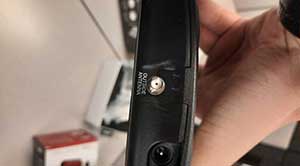
The Drive Reach’s SMB connectors are female on the coaxial cable, allowing for an easy connection to the male SMB connection on the signal booster. When connected correctly, you will hear a clear snapping sound. These types of connectors are very rigid. While SMB Connectors are very easy to install, they are prone to break if sufficient force is applied to the connector. Unlike SMA Connectors, SMB Connectors are not easy to remove and are not designed to be connected and disconnected frequently.
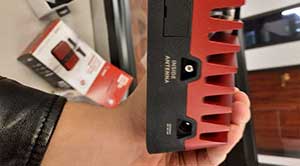
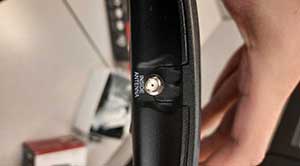
In short – the weBoost Drive X has more access to accessories, and is easier to transfer between vehicles. The accessory gap is closing quickly though, and there are plenty of options to get anything working on the Drive Reach. However, the ability to easily transfer between vehicles is noteworthy if that’s something you plan to do.
Power Supply Differences
Here’s another area where the Drive Reach has a clear advantage.
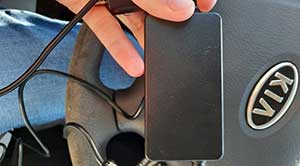

Both the Drive X and Drive Reach come bundled with a power supply that needs to be plugged into the DC 12 volt power source in your vehicle (you know the one – the old cigarette lighter). However, while the Drive X’s is a standard 3-amp, the Drive Reach is a 4.5 amp with a major feature: a USB 2.1 pass through port.
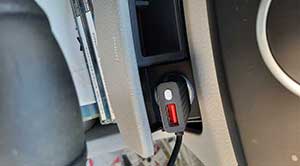
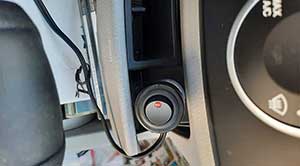
What’s that? Nothing much – it only doubles as a phone charger. One of the biggest complaints people have with vehicle signal boosters is that they use up the cigarette lighter port in their car. The Drive Reach does not have that problem, allowing for you to use the booster and charge your phone or any other USB-powered device you may have. You can also turn the booster on and off with an LED light present on the power source, so you can save power that way if you’re not using the booster. Overall, a superior experience in every way.
The power supplies between the two devices are not interchangeable.
Cable Differences
Both the weBoost Drive X and weBoost Drive Reach use Wilson100 cable. The Drive Reach uses it for all connections, but the Drive X uses RG174 cable from the booster to the outside antenna. The difference between these coax cables is negligible, and the length of any given cable run means these cables are effectively the same. Neither booster has the advantage here.
Antenna Differences
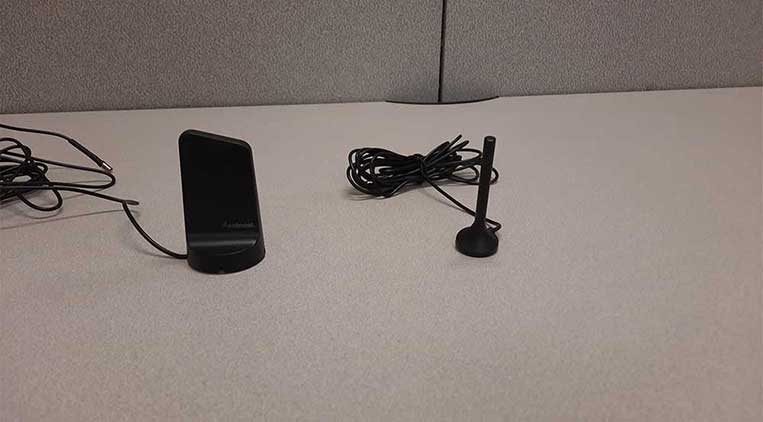
Both the weBoost Drive X and weBoost Drive Reach come bundled with the same cellular antennas: a 4” magnet mount outdoor antenna and a low-profile dash-mounted “candy bar” inside antenna with velcro on the back for easy placement.
As mentioned, the weBoost Drive X has easier customization options here, with simpler access to the 12” magnet mount outdoor antenna and the indoor desktop antenna, but the weBoost Drive Reach can make use of these fairly easily as well. For most people, this will be a wash.
Size Differences
The Drive Reach is rectangular, while the Drive X is roughly a square. The Drive Reach is a fair bit heftier than the Drive X, due to the inclusion of the heat sink and more metallic design. This shouldn’t really affect much, but it is worth noting all the same. Neither does it heavily affect the ranking of the boosters.
The Indicator Light
Both mobile cellular signal boosters have an indicator light on the front panel of the booster which indicates its status. Both the weBoost Drive X and weBoost Drive Reach include a user's manual detailing the proper interpretation of the signal light, as well as how to troubleshoot any problems.
Both signal boosters use the same light system, which is not only common to these boosters, but to all boosters manufactured by Wilson Electronics. This includes:
- A green solid indicator light means that the booster is working properly on all frequency bands.
- A green solid indicator light with intermittent red blinking means that the booster has automatically reduced its power to at least one of the frequency bands to prevent the occurrence of signal oscillation or feedback.
- A solid red indicator light means that the booster has been completely shut down to prevent similar signal tower interference due to oscillation. This is a rare occurrence.
Options for Maximum Power
If you’re eyeing the weBoost Drive X, a really solid choice is to pick up a 12” magnet mount. It’s inexpensive and will help squeeze a little more gain into your system. This also works well for the Drive Reach, but isn’t as necessary for it unless you really range far out.
There are several versions of these mobile signal boosters optimized for different uses.
These are fairly self-explanatory:
- The weBoost Drive X RV and weBoost Drive Reach RV are optimized for RV and camper use
- The weBoost Drive X OTR and weBoost Drive Reach OTR are optimized for truckers
- The weBoost Drive X Marine and weBoost Drive Reach Marine are optimized for boats and yachts with indoor cabins
- The weBoost Drive X Fleet and weBoost Drive Reach Fleet are optimized for fleet vehicles, and require a professional installation.
Pick the version you need.
Choosing Between the weBoost Drive X and weBoost Drive Reach
Finally, the big question: which one for me?
Let’s go through the positives for each booster, one at a time.
weBoost Drive Reach Advantages
- Significantly higher uplink and downlink power, for consistently better performance no matter where you go
- Sturdier design
- Much more user friendly power supply
weBoost Drive X Advantages
- $100 cheaper
- Easier to switch between multiple vehicles
If you can afford it, we recommend the Drive Reach. The advantages of the Drive X just aren’t enough to recommend over the Drive Reach, unless you really can’t afford the Reach or plan to bounce your booster between vehicles every few days. The Drive Reach’s increased performance and increased user-friendliness makes it the no brainer choice here.
Interested in Learning More? Check Out Our Signal Boosting Info Center


Money Back Guarantee

Technical Support